Abstract
1 Valproic acid or phenytoin were added to fresh human serum in varying concentrations and their binding characteristics determined by the method of Scatchard (1949). 2 Changes in serum albumin binding were investigated for phenytoin in the presence of 280, 560, 1050 and 2100 mumol l-1 valproic acid, and for valproic acid in the presence of 40, 120, 280 and 480 mumol l-1 phenytoin. 3 Phenytoin appeared to bind to a single site on the albumin molecule and could be competitively displaced from this site by concentrations of valproic acid above 280 mumol l-1. 4 At high concentrations of valproic acid, the affinity of phenytoin for albumin was greatly decreased but the number of available binding sites was increased from one to four. 5 Valproic acid was bound to two high affinity and five low affinity binding sites but the latter were not detectable at valproic acid concentrations below 2100 mumol l-1. 6 Phenytoin displaced valproic acid from its high affinity binding sites, although this was statistically significant only at a concentration of 480 mumol l-1 phenytoin.
Full text
PDF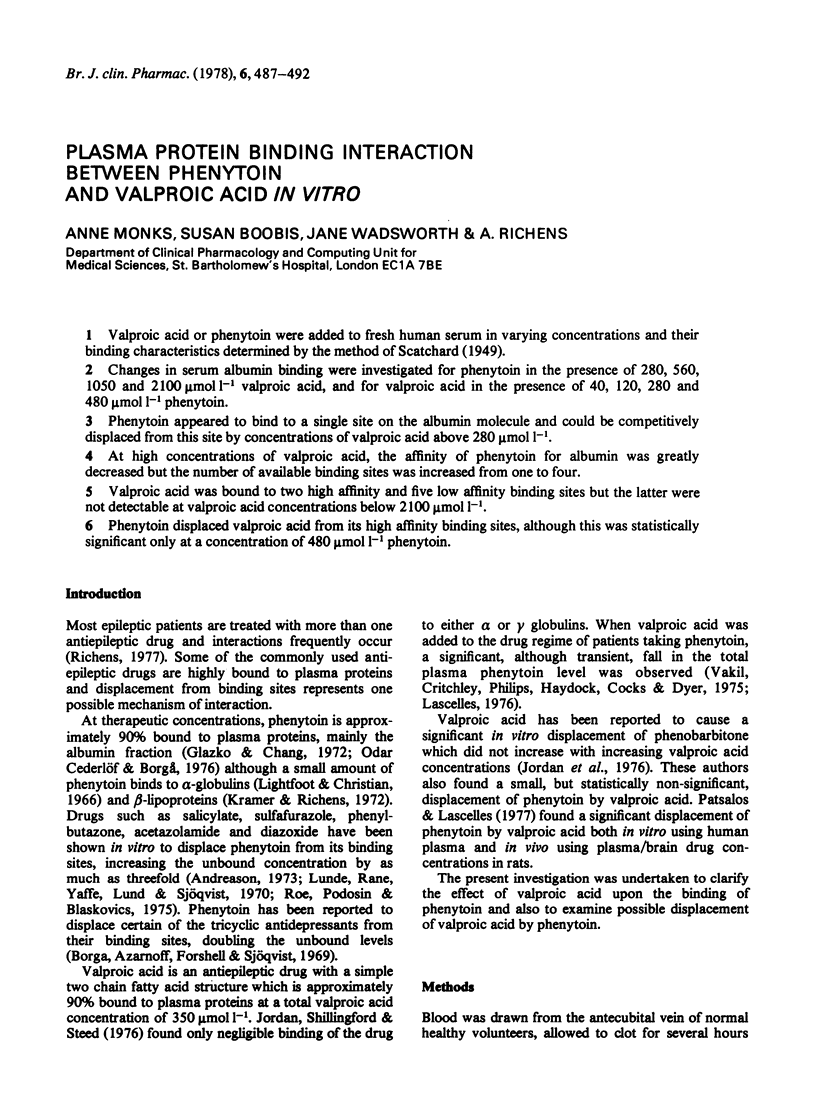
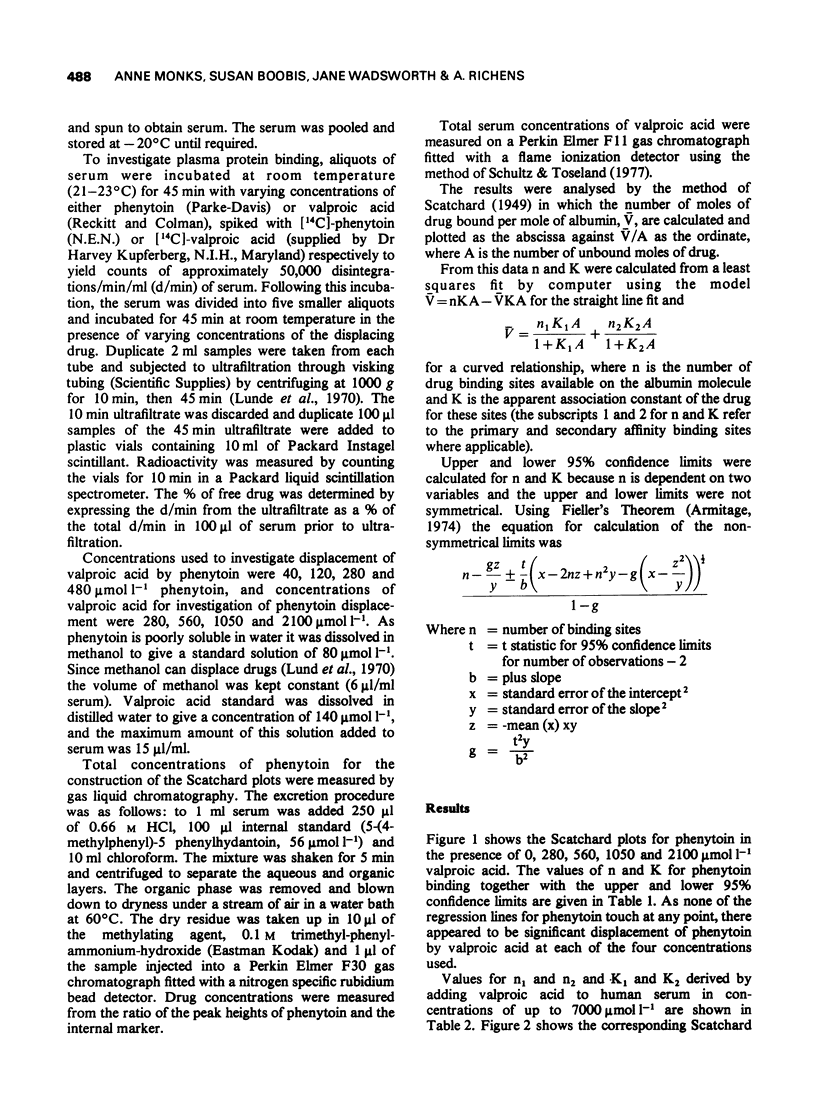
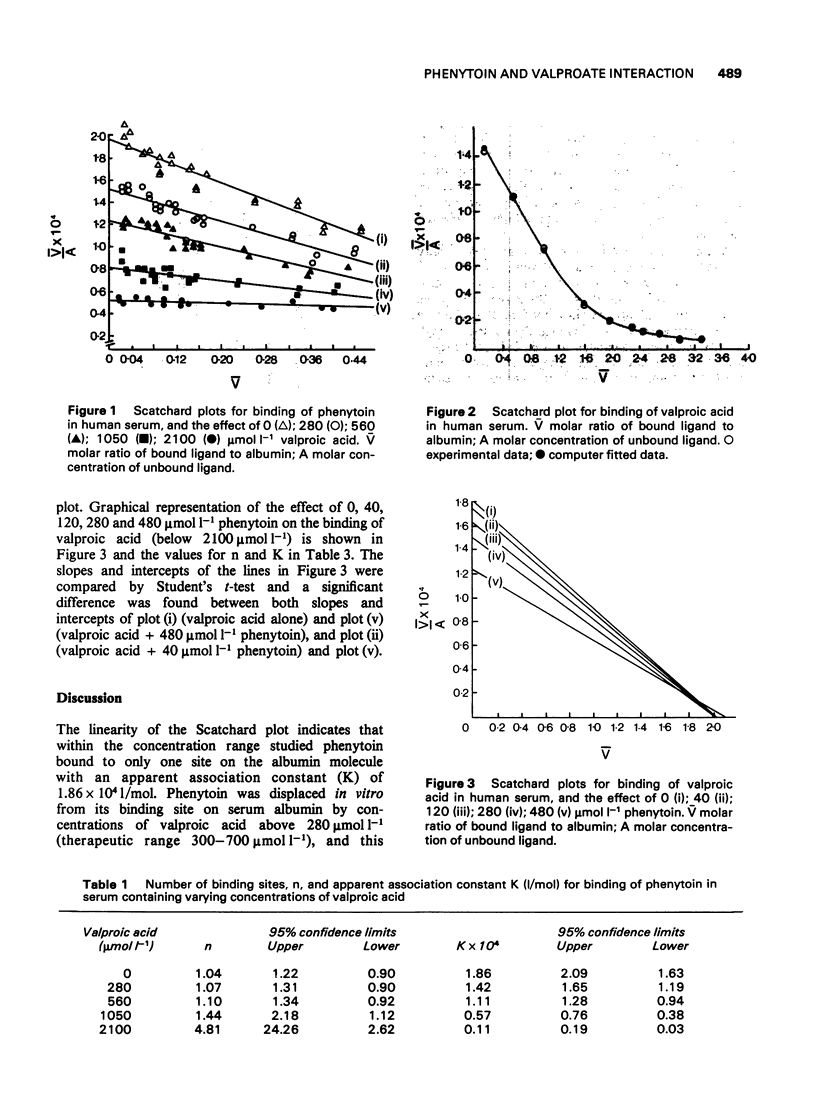
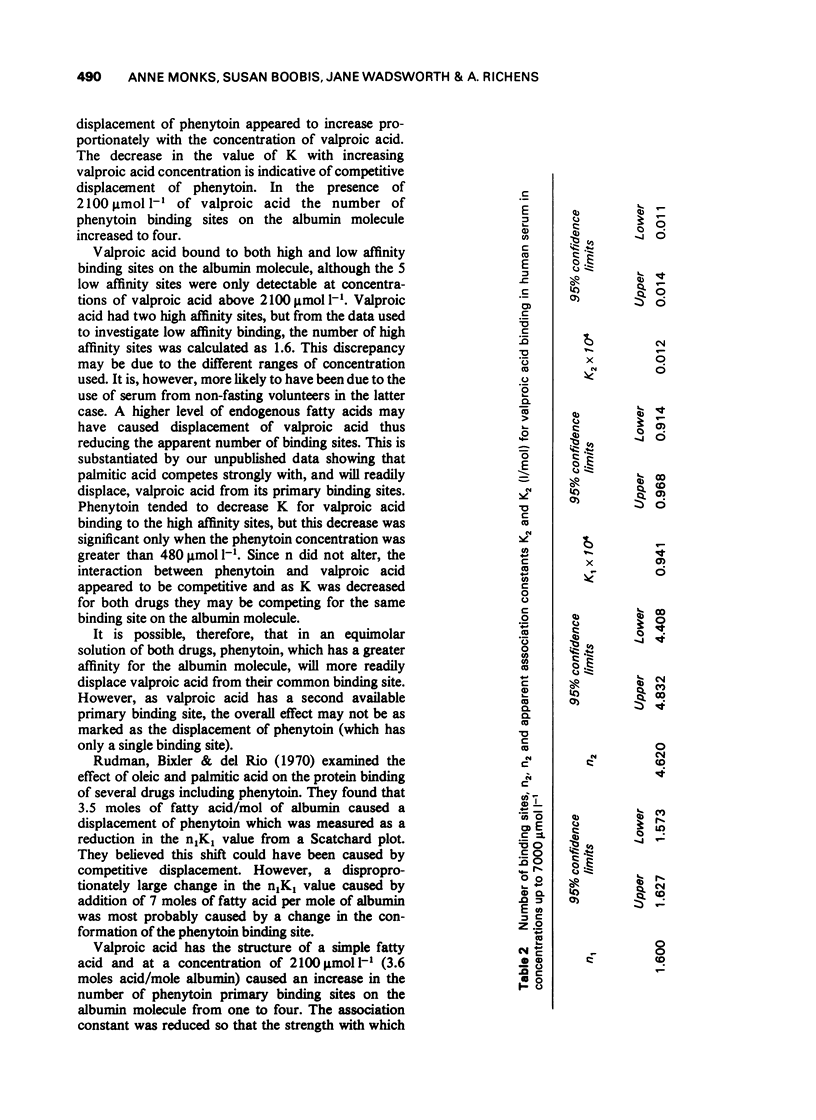
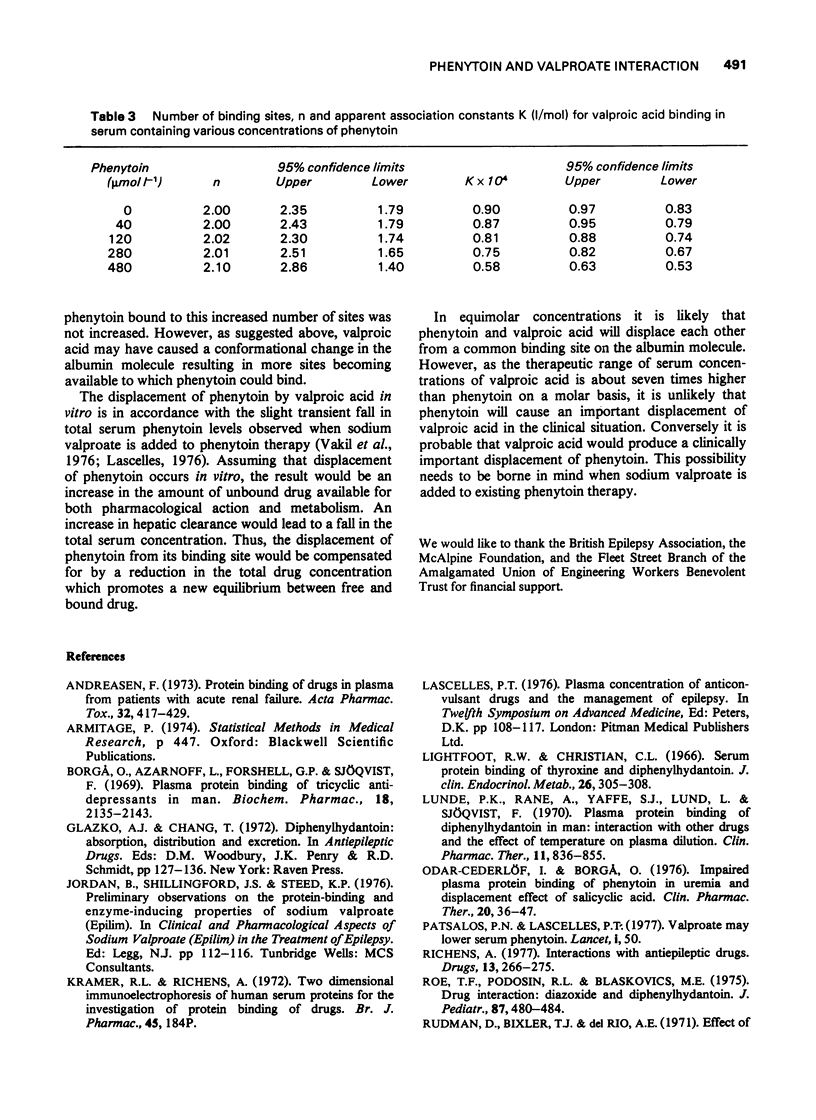
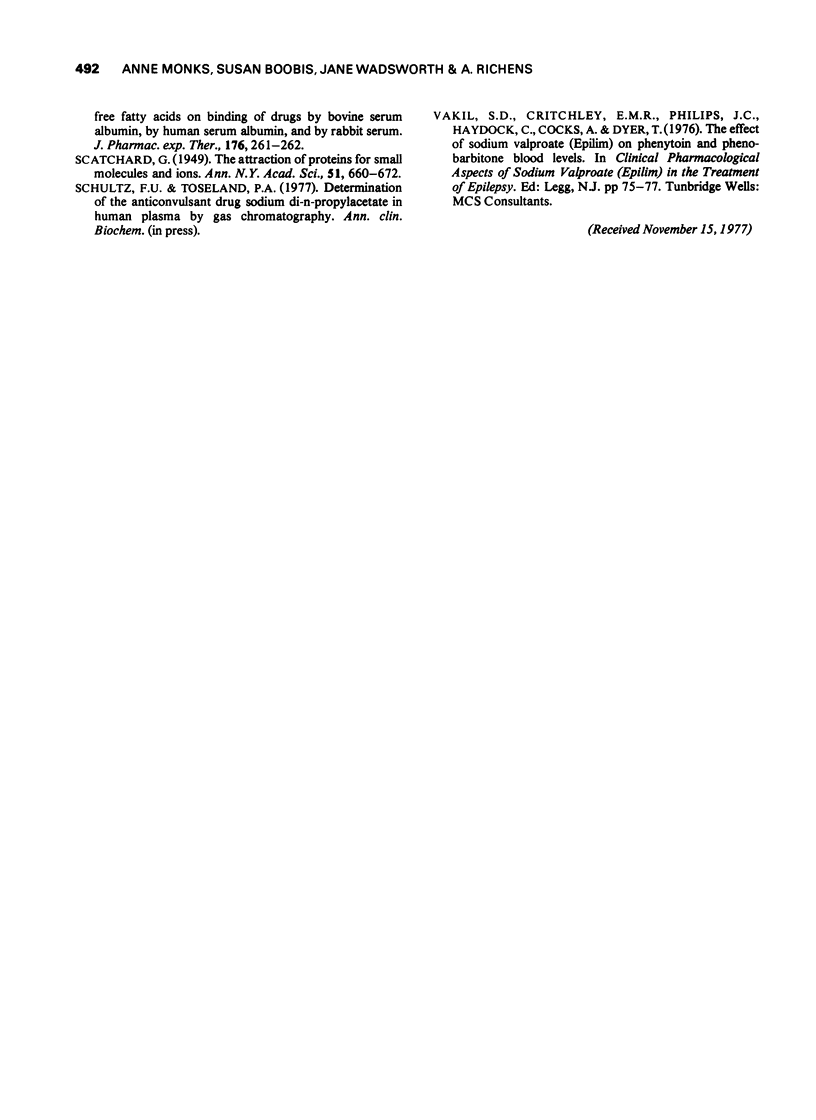
Selected References
These references are in PubMed. This may not be the complete list of references from this article.
- Andreasen F. Protein binding of drugs in plasma from patients with acute renal failure. Acta Pharmacol Toxicol (Copenh) 1973;32(6):417–429. doi: 10.1111/j.1600-0773.1973.tb01488.x. [DOI] [PubMed] [Google Scholar]
- Borgå O., Azarnoff D. L., Forshell G. P., Sjöqvist F. Plasma protein binding of tricyclic anti-depressants in man. Biochem Pharmacol. 1969 Sep;18(9):2135–2143. doi: 10.1016/0006-2952(69)90318-9. [DOI] [PubMed] [Google Scholar]
- Kramer R. L., Richens A. Two dimensional immunoelectrophoresis of human serum proteins for the investigation of protein drugs. Br J Pharmacol. 1972 May;45(1):184P–185P. [PMC free article] [PubMed] [Google Scholar]
- Lightfoot R. W., Jr, Christian C. L. Serum protein binding of thyroxine and diphenylhydantoin. J Clin Endocrinol Metab. 1966 Mar;26(3):305–308. doi: 10.1210/jcem-26-3-305. [DOI] [PubMed] [Google Scholar]
- Lunde P. K., Rane A., Yaffe S. J., Lund L., Sjöqvist F. Plasma protein binding of diphenylhydantoin in man. Interaction with other drugs and the effect of temperature and plasma dilution. Clin Pharmacol Ther. 1970 Nov-Dec;11(6):846–855. doi: 10.1002/cpt1970116846. [DOI] [PubMed] [Google Scholar]
- Odar-Cederlöf I., Borga O. Impaired plasma protein binding of phenytoin in uremia and displacement effect of salicylic acid. Clin Pharmacol Ther. 1976 Jul;20(1):36–47. doi: 10.1002/cpt197620136. [DOI] [PubMed] [Google Scholar]
- Patsalos P. N., Lascelles P. T. Valproate may lower serum-phenytoin. Lancet. 1977 Jan 1;1(8001):50–51. doi: 10.1016/s0140-6736(77)91693-2. [DOI] [PubMed] [Google Scholar]
- Richens A. Interactions with antiepileptic drugs. Drugs. 1977 Apr;13(4):266–275. doi: 10.2165/00003495-197713040-00002. [DOI] [PubMed] [Google Scholar]
- Roe T. F., Podosin R. L., Blaskovics M. E. Drug interaction: diazoxide and diphenylhydantoin. J Pediatr. 1975 Sep;87(3):480–484. doi: 10.1016/s0022-3476(75)80665-2. [DOI] [PubMed] [Google Scholar]


